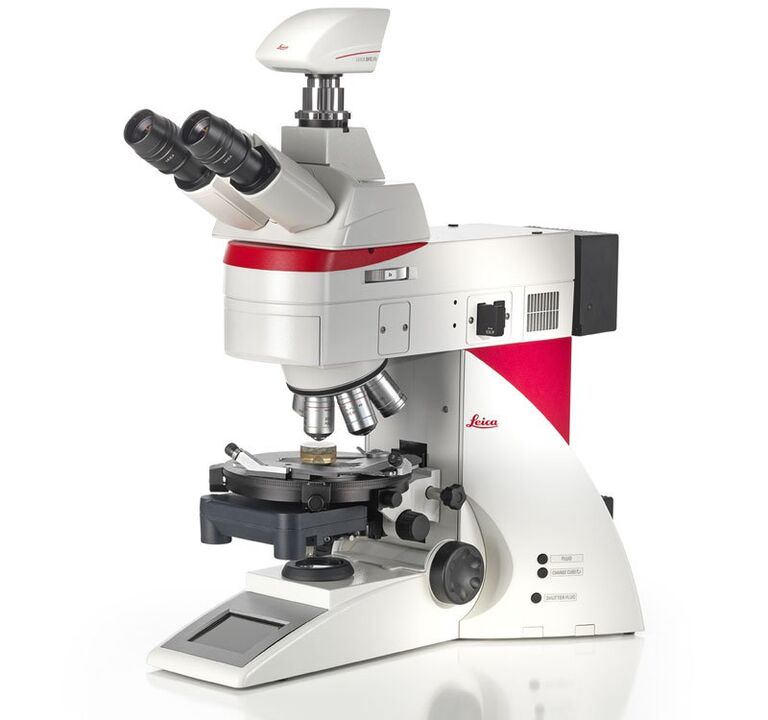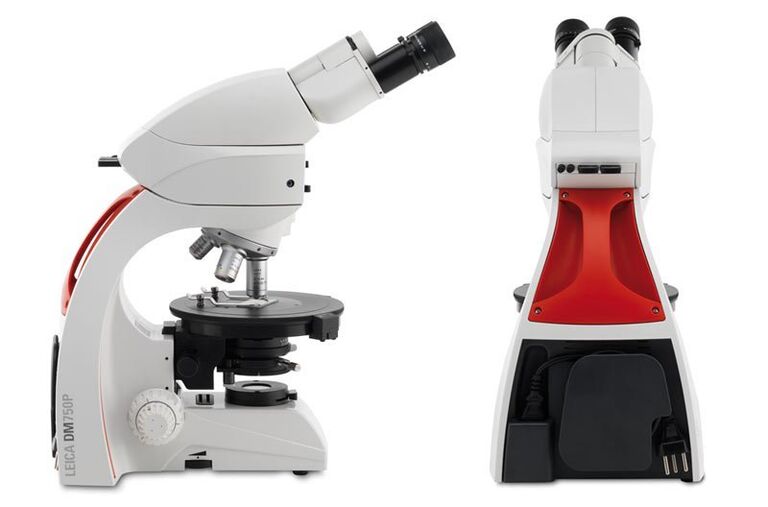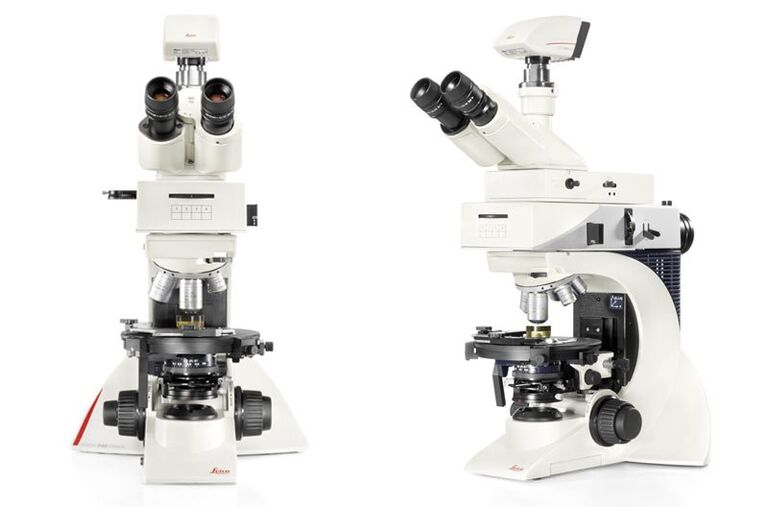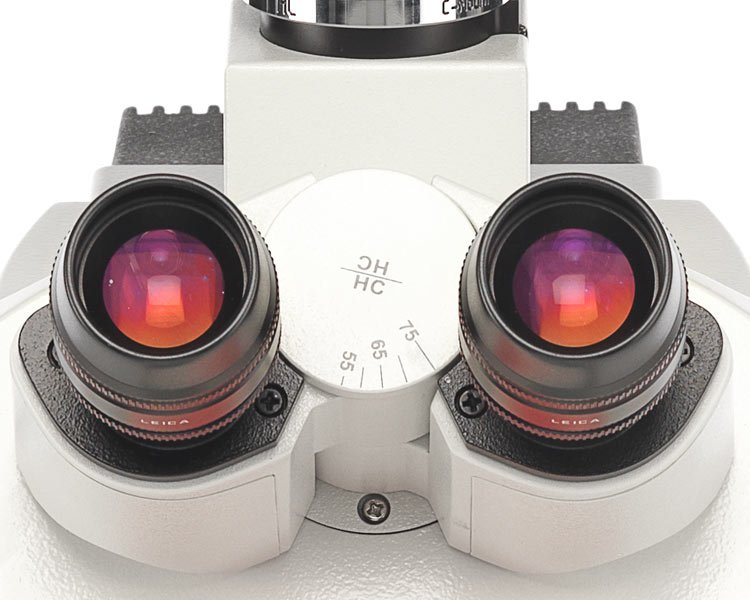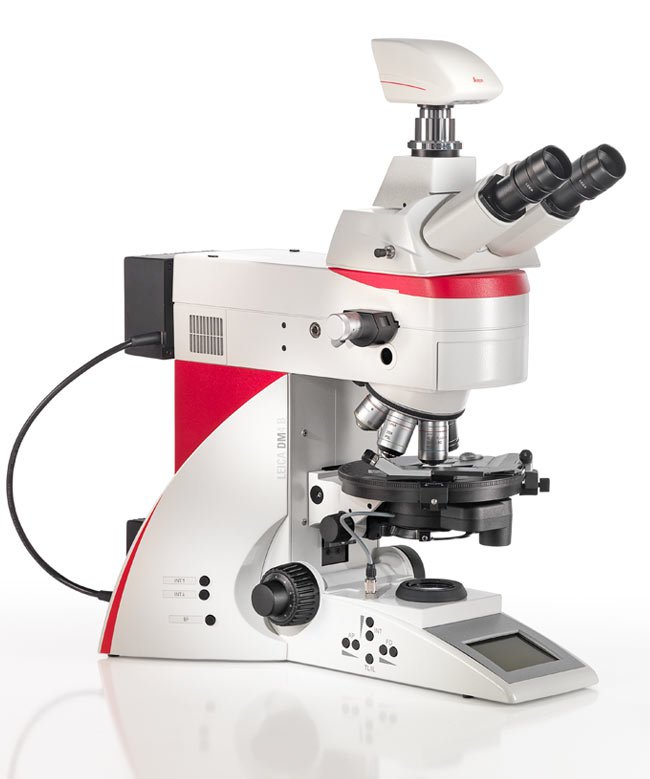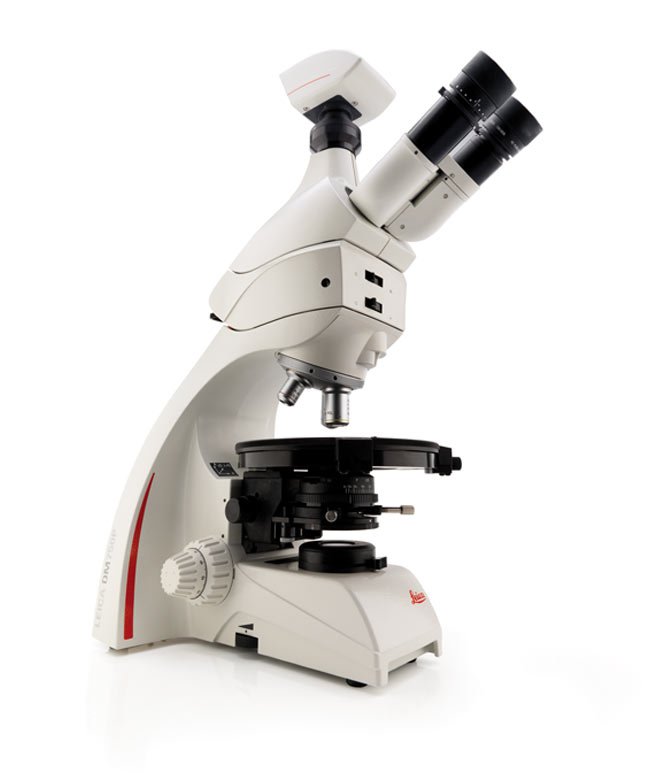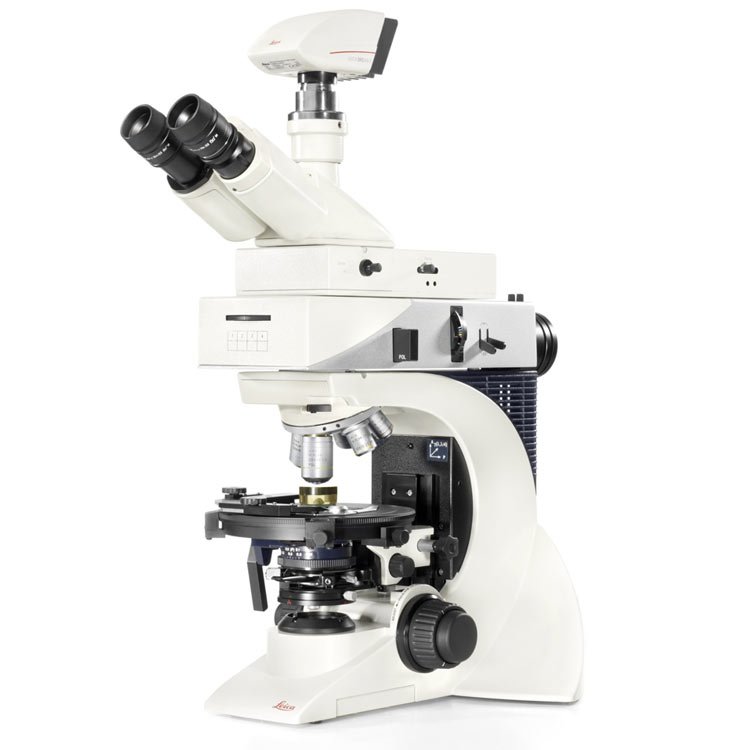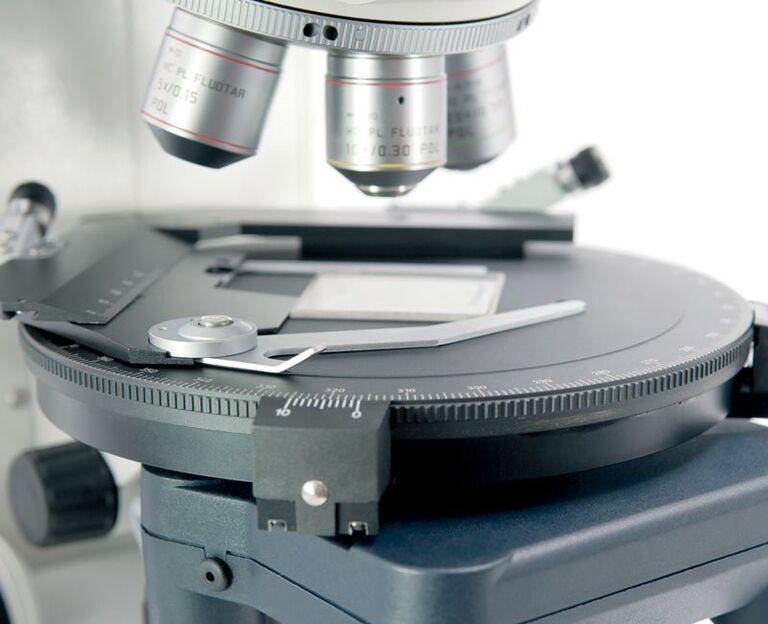You need a few components to get what you aim for in polarization. These are the most important:
- Strain-free optics because you need to be sure that the observed birefringence results from the sample and not from the optics
- LED illumination is crucial because it lights the samples homogenously and at a constant colour temperature
- Polarizers will make birefringence visible, and a rotatable stage enables you to align the sample and optical axis
- You need a Bertrand lens for conoscopic observation of the optical axis and compensators for measurement tasks
There will be Light!
LED illumination saves you money in many ways: It consumes less energy than halogen illumination and does not need to be replaced, causing downtime of your instrument because it has a lifetime of up to 25,000 hours. Further advantages:
- LED lights your samples homogeneously and at a constant colour temperature, providing you with a realistic impression of your sample
- LED adjusts light intensity fast so you can work smoothly
- LED requires no daylight filter since the LED already provides a constant light temperature of 4500 K
- LED produces little heat and therefore does not need a cooling fan
- LED lets you work undisturbed because no cooling fan makes a noise around you
Completely at Your Service: Leica DM4 P
If you want to do everything in polarization microscopy, you can with the Leica DM4 P.
Store and recall information with coded components
- When you change objectives, illumination intensity and aperture settings are recalled with the Illumination Intensity Control and Contrast Manager.
- Acquired images are always calibrated due to the coded nosepiece.
Identify interesting structures
- With the large 25-mm field of view, you get a perfect overview.
- A lower magnification rather than the detailed view often reveals the specific information you need – think of flow or deformation structures or zonation by cooling processes.
Get your Nosepiece Around it!
Get different sample information from different magnifications of the 6-objective nosepiece.
- Use a 2.5x overview objective to identify macro structures in your sample
- Change to 63x magnification for detailed investigations of optical properties by means of conoscopy
- Switch to 100x to inspect phase reactions along grain boundaries
By the way: The nosepiece is also coded to support you intelligently.
Best of Both Illuminations
You can configure the Leica DM4 P with LED illumination either for transmitted or incident light or with LED for both transmitted and incident light in one go.
- Incident light is mandatory for all who perform reflectivity measurements, for example, looking at ores or coal.
- Transmitted light is required for birefringence measurements, such as inspecting geological thin sections, polymer foils, or drugs.
- For specific applications such as geological research, both are necessary.
When the microscope is equipped for the incident and transmitted light, the associated objective should be magnification >10x with or without cover glass correction.
Investigate Optical Properties
Conoscopy is a technique utilized to examine interference figures, which provide insights into the optical properties of the material being investigated. By analyzing the shape of the interference figures and any modifications observed through compensators, it is possible to determine essential information about the material, such as the number of the optical axis, the angle(s) of the optical axis, and the optical character.
The Leica DM4 P is ideally suited to conoscopy:
- Strain-free objectives with high magnification and high numerical aperture are a must for this application.
- Use special 63x Leica objectives that fulfill the highest requirements of polarization class 5 to obtain optimal results.
Great Flexibility: Leica DM2700 P
If you do not need full automation and maximum reproducibility, the Leica DM2700 P is your instrument of choice. Apart from the automation, it offers flexibility similar to the Leica DM4 P.
- Get distinct sample information with five objectives on the 5-fold central objective revolver
- Get large overviews from the 22-mm field of view
- Obtain a better contrast with UC-3D illumination at incident light observation
The Champion in Education: Leica DM750 P
In education, you need a robust tool that students can use every day. You can easily plug and play it – that’s what we call the best preconditions for successful learning.
- Get into the details of your samples with 4 objectives
- Use the 20-mm field of view for a good overview
- Enjoy the practical details the instrument offers: You can carry it by its handle and stow away its cable inside the instrument



